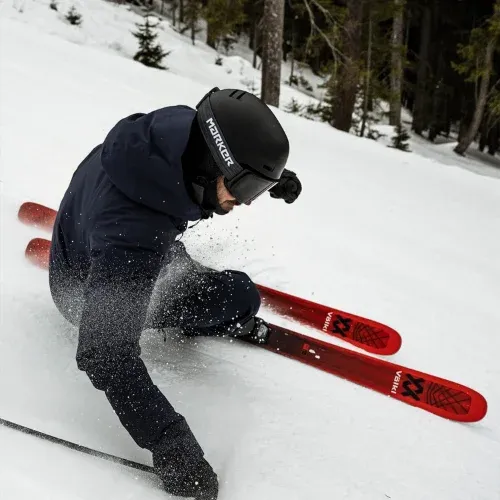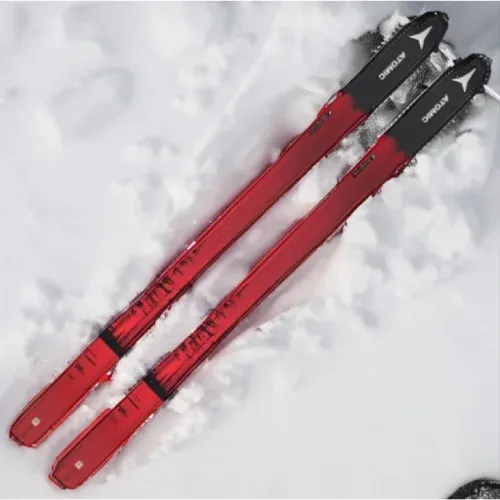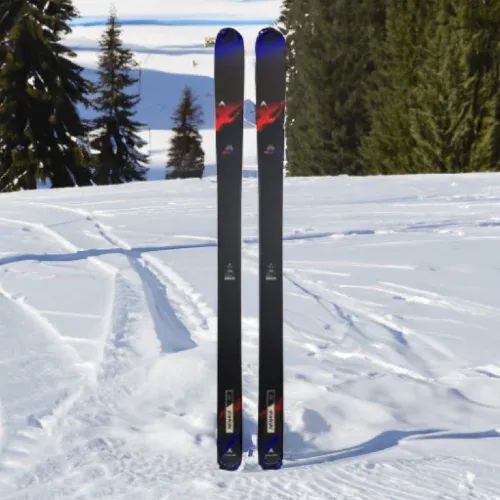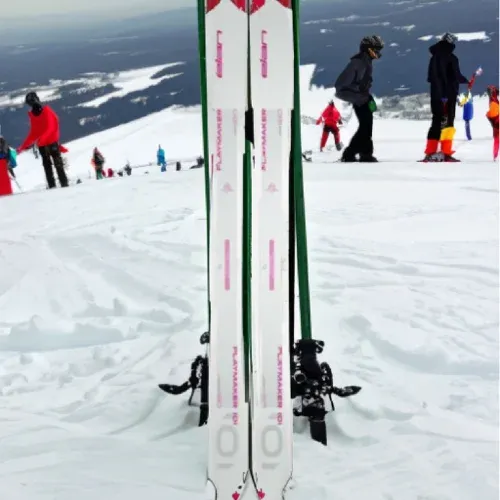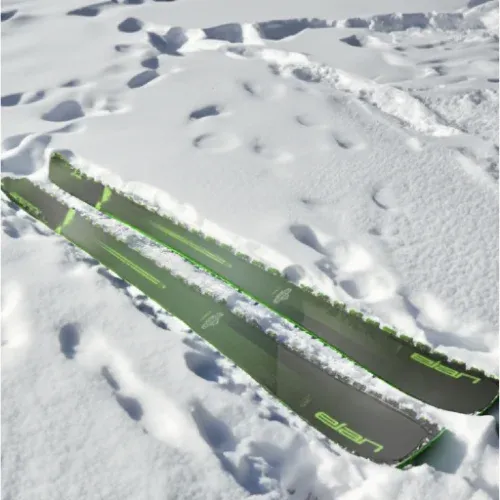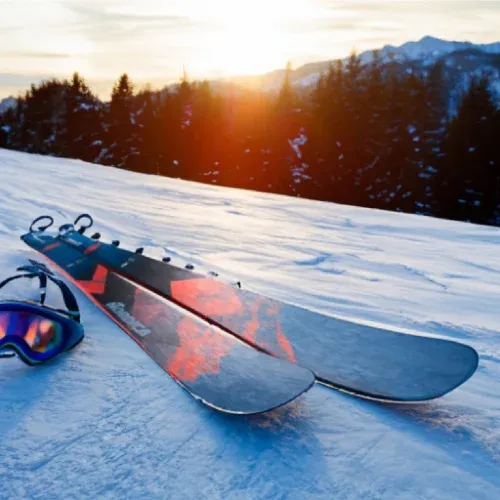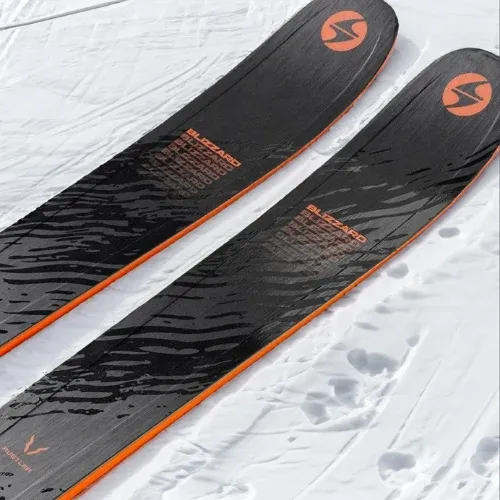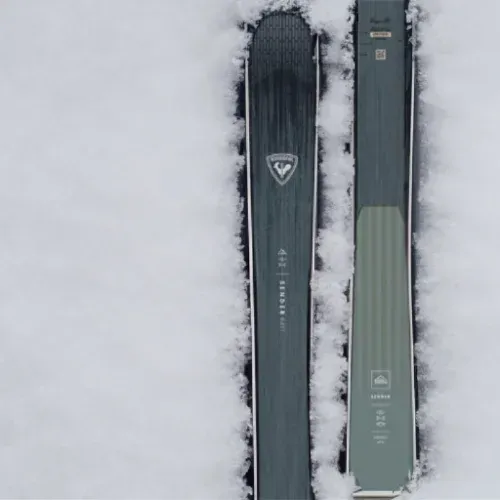As winter descends and the mountain peaks start donning their snowy caps, the adrenaline rush among ski enthusiasts begins to build. Welcome to our comprehensive guide on the best skis of the 2023/24 season! This year, more than ever, the skiing landscape is evolving rapidly. Innovative technologies are transforming the way we glide down slopes, making our favorite winter sport even more thrilling.
In this article, we'll traverse through the icy terrains of the latest ski gear, exploring how each set of skis performs in various conditions - from the crisp groomers to the challenging off-piste. We'll delve into the nuanced differences that make each ski unique, helping you understand which one might just become your perfect mountain companion.
So, if you're a seasoned pro looking to take your skills to the next level, or a beginner eager to carve your first trail, stay tuned. This journey promises to be as exhilarating as a downhill ride on a fresh powder day. Without further ado, let's dive into the snow-covered world of the best skis in 2023/24. Hold on tight, it's going to be a thrilling ride!
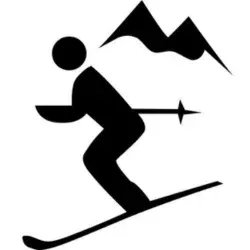
Pinnacle Picks for Peak Performance
From fresh snow to icy conditions, east coast to west coast, our top picks cater to various skiing preferences and skill levels. Some of the standout skis for peak performance this season include:
Remember to pair these excellent skis with appropriate ski boots for the best skiing experience possible.
Our picks for best skis for the 2023/24 season:
- Völkl M6 Mantra: Best All Mountain Ski
- Atomic Maverick 95 Ti: Best for Energetic Carving
- Dynastar M-Menace 90 Skis: Best Budget-Friendly Junior Ski
- Elan Playmaker: Best Progressive Design
- Elan Ripstick 96: Best for Mixed Snow Conditions
- Nordica Enforcer 100: Best for Intermediate to Expert Skiers
- Blizzard Rustler 10: Best Do Everything Skis
- Rossignol Sender 94 Ti: Best Value Ski
Specifications:
- Sidecut: 135 / 96 / 119 mm
- Turn radius: 18.4 m @ 177 cm
Pros:
- Excellent stability at high speeds
- Hybrid camber/rocker profile
- 3D radius sidecut technology
Cons:
- Heavy
- Not ideal for deep powder
The Völkl M6 Mantra is a standout ski for versatility and ranks among the best all mountain skis. As one of the best new skis of the season, it features a hybrid camber/rocker profile and 3D radius sidecut technology, which combines three distinct turn radii within the side of the ski. This innovative design offers exceptional stability at high speeds, making it suitable for skiing on hard pack and icy slopes as well.
The M6 Mantra to be characterized by a damp feel and excellent all-mountain performance. Its impressive versatility and adaptability across various terrains and snow conditions make it an essential part of your skiing gear. The M6 Mantra is priced higher than the Rossignol Sender 94 Ti and the Head Kore 93, yet it delivers more comprehensive all-mountain performance, as reported by those who have skied on these models. If you're looking for a one ski quiver, this is your ski!
Rating:
- Performance: 4.5/5
- Versatility: 4.5/5
- Stability: 4/5
- Price: 3.5/5
Specifications:
- Sidecut: 130.5 / 95 / 119.5 mm
- Turn radius: 20 m @ 180 cm
Pros:
- Flow profile, rocker, camber, and HRZN Tech for optimal edge contact
- Excellent performance on groomed runs
- Lightweight and nimble for carving
Cons:
- Not as stable at high speeds as heavier skis
- Limited playfulness in powder
The Atomic Maverick 95 Ti is a fantastic choice for those who love energetic carving. With its features including:
- Flow profile
- Rocker
- Camber
- HRZN Tech
This ski ensures optimal edge contact during turns and excellent float off-piste. The Maverick 95 Ti is designed to be a versatile all-mountain ski that performs well in various skiing conditions. This ski to be exceptional on groomed runs, offering stability, power, and predictability. Its lightweight and nimble construction make it a pleasure to carve on groomed trails.
Skiers have consistently praised the Atomic Maverick 95 Ti for its dynamic and robust character. The ski's standout attributes encompass:
- Versatility: Exhibits swift transitions from edge to edge, ensuring adaptability across diverse snow terrains.
- Accessibility: Delivers an enjoyable skiing experience, particularly in softer snow conditions.
- Vivacious Carving: Its energetic carving prowess distinguishes it from its mid-90s all-mountain counterparts.
Rating:
- Performance: 4.5/5
- Versatility: 4/5
- Carving: 4.5/5
- Price: 3.5/5
Specifications:
- Sidecut: 127 / 90 / 117 mm
- Turn radius: 17 m @ 170 cm
Pros:
- Durable construction with poplar wood core and cap construction
- Budget-friendly option for junior skiers
- Versatile and maneuverable
Cons:
- None
The Dynastar M-Menace 90 Skis provide a cost-effective option for junior skiers, offering:
- Durability
- Enhanced maneuverability
- Poplar wood core and cap construction for durability
- Width of 90mm for versatility and maneuverability
- Fills the gap between kids and adult all-mountain skis
The Dynastar M-Menace 90 Skis have a versatile and easygoing attitude, making them ideal for playful skiers. They come in various sizes to accommodate junior skiers of different heights and skill levels, including:
- 140cm
- 150cm
- 160cm
- 170cm
- 180cm
Overall, these skis provide a budget-friendly option for high-performance fun on the mountain.
Rating:
- Performance: 4/5
- Versatility: 4/5
- Maneuverability: 4.5/5
- Price: 5/5
Specifications:
- Sidecut: 122 / 87 / 112 mm
- Turn radius: 15.5 m @ 175 cm
Pros:
- Progressive freeride ski design with twin tips and symmetrical sidecut
- Surf Rocker profile for enhanced maneuverability and control
- Tubelite Wood Core for poppy and playful skiing experience
Cons:
- Better suited for softer snow conditions
- Not ideal for hardpack and icy conditions
The Elan Playmaker is a progressive freeride ski that features twin tips and a fairly symmetrical side cut, making it perfect for those who enjoy a playful ski experience. This ski offers a surfy feel, is agile and bouncy underfoot, and is ideal for powering through chopped up powder and executing smooth landings. While it is suitable for carving, the Playmaker truly shines when drifting or skidding turns in softer snow conditions.
What sets the Elan Playmaker apart is its bi-directional Surf Rocker profile, progressive shaping, and Elan’s energetic Tubelite Wood Core. These features allow for a poppy and playful skiing experience, making the Playmaker a modern and progressive choice for younger skiers seeking a unique ride on the mountain.
Rating:
- Performance: 4/5
- Design: 4.5/5
- Playfulness: 4.5/5
- Price: 3.5/5
Specifications:
- Sidecut: 136 / 96 / 110 mm
- Turn radius: 18 m @ 180 cm
Pros:
- Excellent stability and dampness in soft, forgiving snow conditions
- Versatile ski suitable for a range of skier levels
- Stiffer and more precise feel compared to other versions of the Ripstick
Cons:
- Limited testing in deep powder
- Not ideal for beginners
The Elan Ripstick 96 is renowned for its versatility and performance in mixed snow conditions. Designed with a combination of flotation and edge grip, this ski is suitable for a wide range of snow types. Its lightweight construction, featuring Elan’s Amphibio profile, enhances maneuverability and control, making it a joy to ski with.
The Elan Ripstick 96 provides excellent stability and dampness in soft, forgiving snow conditions. This versatile ski is suitable for a range of skier levels, from intermediate to advanced. While it does offer a stiffer and more precise feel compared to other versions of the Ripstick, it maintains a forgiving and straightforward feel that many skiers enjoy.
Rating:
- Performance: 4/5
- Versatility: 4.5/5
- Stability: 4/5
- Price: 3.5/5
Specifications:
- Sidecut: 132.5 / 100 / 120.5 mm
Pros:
- The two sheets of metal plus carbon construction give the skis remarkable strength and agility.
- The shape and profile are designed for power and agility, making them capable of handling a variety of terrains.
- They perform short turns very well and provide a good grip.
- They have a balanced feel that combines agility and power.
- Strong intermediates may consider these skis as an opportunity to grow their skills.
Cons:
- The skis require a fair amount of skier input for quick rotary turns in deeper snow and bumps.
- Not ideal for beginner.
The Nordica Enforcer 100 immediately conveys confidence with its sleek, robust design. Its engineered shape combines tip and tail rocker with traditional camber, enabling precise carves on groomed runs and buoyancy in powder.
Crafted with a full wood core and dual metal sheets, these skis boast a responsive yet stable flex pattern, along with superior vibration damping—qualities that discerning skiers value in varied terrain. The Enforcer 100 excels in handling and grip, offering stability at high speeds and facilitating smooth, aggressive turns. Their adaptability is noteworthy, performing well on both hardpack and in powder, making them a smart choice for those seeking versatility.
Rating:
- Performance: 4.5/5
- Versatility: 4.5/5
- Floatation: 4/5
- Price: 3.5/5
- Sidecut: 134/102/123 mm
- Turn radius: 17.5 m at 180 cm
The Blizzard Rustler 10 skis offer outstanding versatility and performance for skiers seeking a top-tier all-mountain experience. The Rustler 10 skis boast a flexible profile suitable for diverse conditions and they provide a sturdy yet maneuverable ride, ideal for aggressive lines.
These skis excel in edge hold and stability, ensuring confidence on steep groomed runs. Despite their stability, they maintain a playful nature, offering a balanced ride that's both powerful and enjoyable.
Optimized for soft conditions, the Rustler 10 skis are a formidable choice for powder enthusiasts but remain adaptable for various snow types, embodying a true all-in-one ski.
Pros:
- The Rustler 10 is designed for soft-snow conditions, making it a powerful option for those who frequently ski in powder.
- Perform well in carving, freestyle, and freeride.
- Praised for its versatility, handling a variety of conditions from hardpack to soft snow and crud.
Cons:
- Leaves a bit to be desired when it comes to overly steep, technical terrain.
- While the skis perform admirably in powder, they can feel a bit narrow in super deep snow.
- May lose some stability at higher speeds.
Rating:
- Performance: 4.5/5
- Versatility: 5/5
- Floatation: 4.5/5
- Price: 3/5
- Sidecut: 127/92/117 mm
- Turn radius: 16 m at 172 cm
The Rossignol Sender 94 Ti is a versatile ski ideal for enthusiasts who enjoy diverse mountain experiences. It excels on groomed runs and off-piste conditions with superior edge grip and stability, allowing for confident sharp turns. Its maneuverability is also a highlight, described as an "all-around workhorse" and "playful" through varied terrain.
Speed is another strong suit of the Sender 94 Ti, offering a nimble yet stable ride. It performs well in bumps, crud, and trees, and stands out for its value, being competitively priced against higher-end models.
Overall, the Rossignol Sender 94 Ti is a top choice for skiers seeking a versatile, affordable ski that doesn't compromise on performance across different terrain.
Pros:
- The titanium layer provides stability at high speeds and better control.
- The progressive sidecut offers a firm grip, which is beneficial for aggressive skiing.
- The wider tip and tail help with flotation in soft snow.
Cons:
- Might not be suitable for novice skiers.
- Some users find the ski to be on the heavier side, which could affect maneuverability.
Rating:
- Performance: 4.5/5
- Versatility: 4.5/5
- Floatation: 4/5
- Price: 3.5/5
Mastering the Mountain: How to Select Your Skis
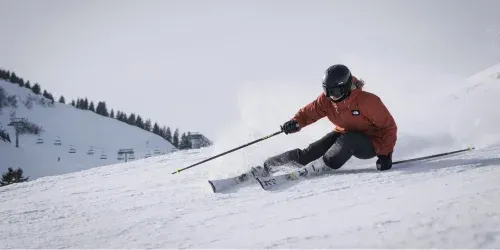
The selection of the ideal ski should take into account various factors like:
- Your skiing style
- Preferred terrain
- Skill level
- Waist width
- Sidecut
- Camber profile
- Weight
By understanding your unique needs and preferences, you’ll be better equipped to find the ski that will provide the best performance and enjoyment on the slopes.
Along with your personal preferences, it’s vital to differentiate between various skiing categories. All-Mountain skis are designed for use in off-trail conditions and terrain, while Frontside skis are optimized for on-trail performance. By selecting the right category, you can ensure that your ski matches your intended skiing experience.
Lastly, the construction and materials of the ski should not be disregarded. While brands often emphasize construction details in their marketing campaigns, it’s advisable to focus more on the type of skiing the brand recommends for the ski. By doing so, you can ensure that you’re selecting a ski that will perform well in your desired conditions and terrain.
Decoding Ski Dimensions
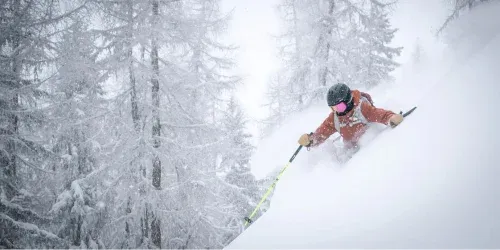
Comprehending the significance of ski dimensions is key in the selection of the ideal pair of skis. Ski dimensions include sidecut, turn radius, and waist width, all of which play a significant role in determining ski performance.
The key elements of a ski’s design that affect its performance are:
- Sidecut: the profile of the ski from the tip to the waist to the tail, which affects how the ski transitions from edge to edge.
- Turn radius: the natural arc the ski will make when tipped on edge, influencing its carving ability.
- Waist width: measured from edge to edge at the narrowest point in millimeters, impacting the ski’s floatation in soft snow and its overall versatility.
These factors work together to determine how a ski will perform in different conditions and for different skiing styles.
Tip and tail rocker also contribute to ski performance, with tip rocker facilitating the initiation of turns and aiding in flotation in powdery snow, while tail rocker helps with the release of the ski at the end of a turn.
By decoding ski dimensions and understanding their impact on ski performance, you can make a more informed decision when selecting your ideal ski.
The Importance of Flex and Feel
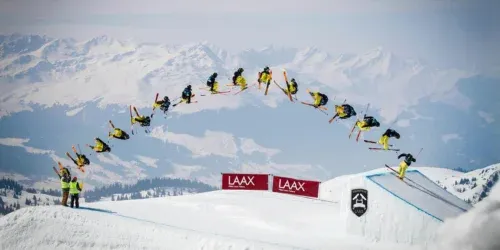
The flex and feel of the ski are critical considerations in your quest for the ideal ski, given their significant influence on your overall comfort and experience on the slopes. Ski flex refers to the degree of flexibility a ski can demonstrate when bent, while feel refers to the overall sensation of skiing on a particular ski.
Different flex profiles can offer various benefits, such as a stiff tail providing snap and pop at the exit of a turn, a soft tail offering a loose and buttery feel, a stiff center for increased stability at high speeds, and a soft center for a forgiving and easily maneuverable ride. Stiffness in various ski components, such as the tip and center, can also enhance performance, with stiffer tips offering increased bite and stability at high speeds and a stiffer center providing increased stability and power.
By understanding the importance of flex and feel in ski performance, you can choose a ski that will best suit your skiing style and preferences, ensuring a comfortable and enjoyable experience on the mountain.
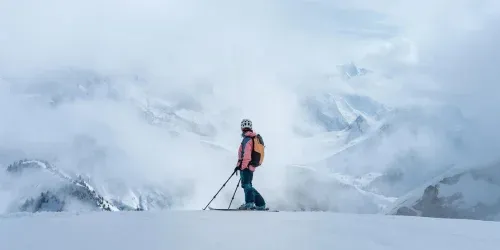
Finding the perfect ski to suit your unique skiing style, preferences, and skill level is an essential step in ensuring an enjoyable and successful skiing experience. By exploring various ski models, their unique features, and their performance on different terrains and snow conditions, we have presented a comprehensive guide to the top skis of the season.
We hope that our guide has provided valuable insights and inspiration for your quest to find the ideal ski. With the right pair of skis, you’ll be well-equipped to tackle the slopes with confidence and enjoy every moment of your skiing adventures.
Get to Know Your Local Ski Resorts
Whether you're a seasoned shredder or a novice to the slopes, understanding the unique offerings of your local ski resorts can greatly enhance your winter sports experience. From the quality of the snow to the variety of the terrain, each resort has its own character and specialties. Let's dive into what makes each ski destination worth a visit.
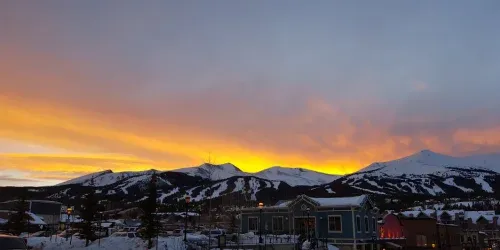
Key Takeaways:
- Discover the unique characteristics of local ski resorts, including snow conditions and terrain.
- Learn about the different types of skis suited for various mountain conditions.
- Gain insights into some of the most popular ski resorts like Mammoth Mountain, Jackson Hole, and Copper Mountain.
Unpacking Snow Conditions: Firm vs. Variable Snow
When it comes to skiing, the condition of the snow can make or break your day on the slopes. Firm snow typically refers to a harder surface that can be found after a cold snap or when the snow has been groomed. It's the kind of snow that carving skis are made for, allowing skiers to make precise, clean turns. On the other hand, variable snow can range from icy patches to soft powder, challenging skiers to adapt their technique and equipment. A true all mountain ski is versatile enough to handle these changing conditions, providing a good balance between grip on hardpack and maneuverability in softer snow.
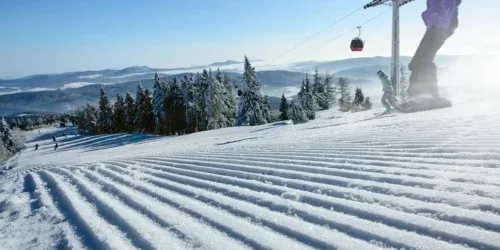
Choosing the Right Skis: From Playful to Powder
Selecting the right skis is crucial for making the most of your mountain adventure. Playful skis are designed to be agile and responsive, perfect for those who enjoy a fun ski experience with lots of turns and jumps. These skis often fall into the all mountain category, as they're built to handle a variety of conditions. For deep snow days, a powder ski with a wider waist provides the necessary float to glide over the fluffy stuff. Meanwhile, a true all mountain ski is a jack-of-all-trades, capable of performing well across different types of terrain and snow conditions.
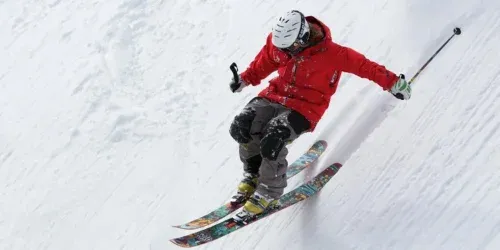
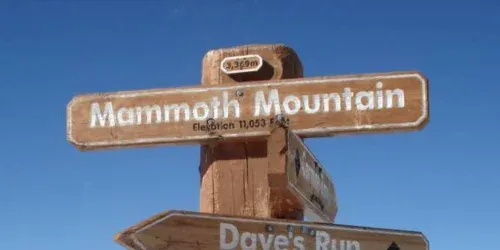
Spotlight on Mammoth Mountain
Mammoth Mountain in California is a prime example of a resort that offers a bit of everything. Known for its long ski season and abundant snowfall, Mammoth boasts a wide range of runs that cater to all skill levels. The mountain's higher elevation often results in firm snow conditions, making it a great place to put those carving skis to the test. However, when the storms roll in, you'll be thankful for a versatile all mountain ski that can handle the fresh powder as well as the groomed trails.
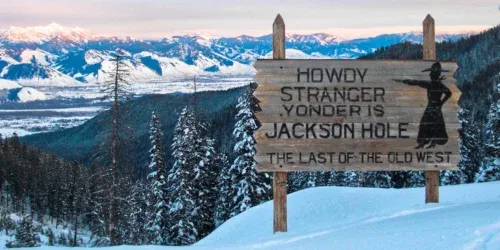
Exploring Jackson Hole
Moving over to Wyoming, Jackson Hole is renowned for its challenging terrain and deep powder. This is where a powder ski comes into its own, allowing you to float through the legendary snow that Jackson Hole frequently delivers. But don't be fooled into thinking that's all there is to this resort. With a range of runs, including groomers and bumps, having a true all mountain ski in your quiver will ensure you're prepared for anything the mountain throws at you.
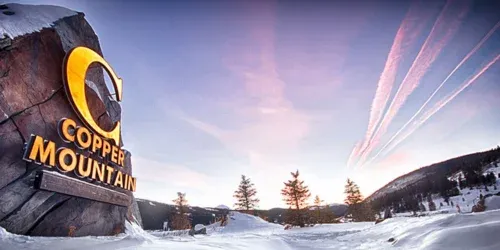
Copper Mountain's Varied Terrain
Colorado's Copper Mountain is another destination that should be on every skier's radar. Its naturally divided terrain makes it easy to navigate and find the perfect run to match your mood and skill level. Whether you're looking for firm snow to carve down the mountain or seeking out pockets of variable snow for a more challenging ride, Copper Mountain has it all. It's the ideal place to test out a fun ski that can adapt to the diverse conditions you'll encounter throughout the day.
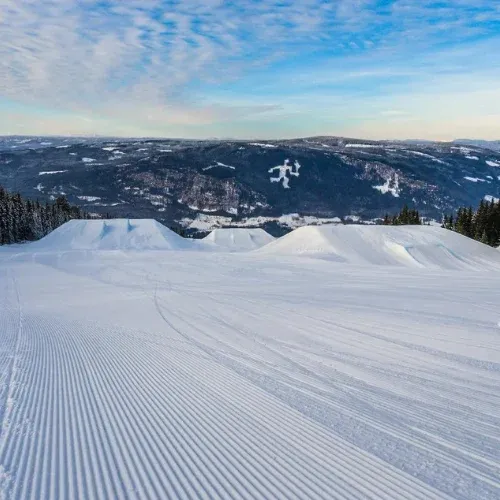
Local ski resorts each have their own unique offerings, from the snow conditions to the terrain. Understanding these differences can help you choose the right equipment and make the most of your time on the mountain. Whether you're carving on firm snow, navigating variable conditions, or floating in powder, there's a ski and a resort that's perfect for you. Mammoth Mountain, Jackson Hole, and Copper Mountain are just a few examples of destinations that cater to a wide range of preferences and abilities.
FAQs
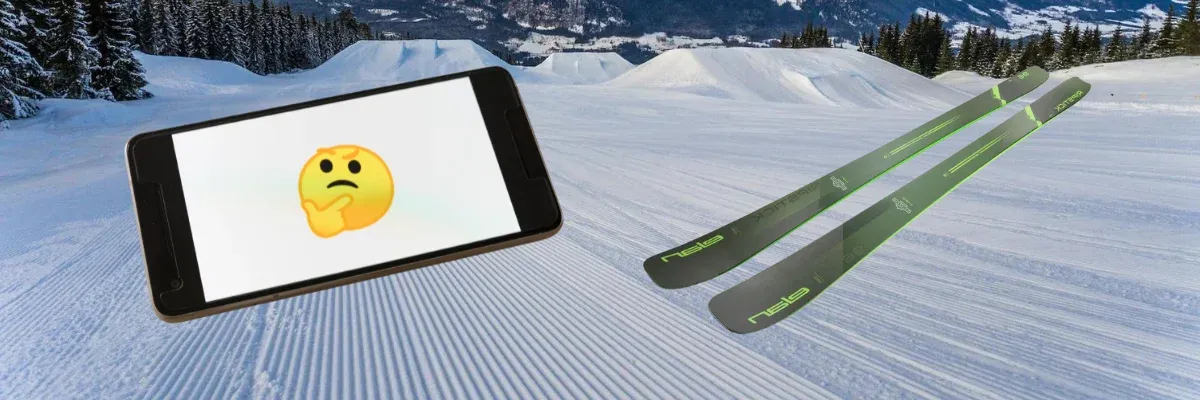
What should I consider when choosing the perfect ski?
When selecting the perfect ski, consider your skiing style, terrain preferences, skill level, waist width, sidecut, camber profile, and weight for the best results.
How do I choose my first pair of skis?
Choosing your first pair of skis involves considering several factors including your skill level, skiing style, and the type of terrain you'll be skiing on.
- Skill Level: If you're a beginner, opt for shorter skis as they are easier to control. Intermediate skiers can go for medium-length skis, while experienced skiers might prefer long skis for speed and stability.
- Skiing Style: For all-mountain skiing, choose skis that are versatile and perform well under various conditions. If you're into freestyle or park skiing, look for twin-tip skis. Powder skis are ideal for deep snow conditions.
- Terrain: Your choice of skis also depends on where you plan to ski. If you'll be skiing on groomed runs most of the time, carving skis are a good option. If you're venturing into off-piste or backcountry terrain, consider wider skis.
- Body Type: Your height and weight also play a role in selecting the right ski length and width. A ski shop professional can help you find the perfect fit.
Remember, it's always a good idea to rent different types of skis before buying your first pair to understand what suits you best.
How do I know my ski size?
Your ski size is primarily determined by your weight, height, and skiing ability.
- Weight and Height: Generally, your skis should reach somewhere between your chin and the top of your head when standing upright. Taller and heavier individuals usually need longer skis.
- Skiing Ability: If you're a beginner, opt for shorter skis (closer to your chin) for better control and maneuverability. Intermediate skiers can choose skis that reach up to their nose or forehead. Advanced skiers often prefer longer skis (up to or exceeding their height) for greater speed and stability.
- Type of Skiing: For off-piste and powder skiing, consider longer and wider skis for better floatation. On groomed runs, shorter and narrower skis often work better.
Always consult with a professional at a ski shop for personalized advice. They can help you find the appropriate ski size according to your specific needs and preferences.
What do the numbers on skis mean?
The numbers on skis, often referred to as the ski dimensions, typically represent three measurements in millimeters: tip width, waist width, and tail width.
- Tip width is the measurement of the ski's widest point at the front.
- Waist width is the narrowest point in the middle of the ski, affecting how quickly the skis can pivot.
- Tail width is the measurement of the ski's widest point at the back.
These dimensions give you an idea of the ski's shape and performance, including its ability to turn, float in powder, or carve on groomed runs.
What is a forgiving ski?
A "forgiving" ski is one that is designed for ease of use and comfort, especially for beginners or less experienced skiers. They are typically softer, lighter, and shorter with a wider waist, allowing for better control and making it easier to turn and stop. These skis are less likely to catch an edge, reducing the chance of falls, and they require less effort and technique to maneuver, hence the term "forgiving".
What is considered a light ski?
A light ski typically refers to a ski that is less weighty and easier to maneuver. While there's no standard weight that defines a "light" ski, most lightweight skis fall under 7 pounds (approx 3.2 kilograms) per pair for adult sizes. This weight can vary based on factors such as the length of the ski, materials used in construction, and type of ski (e.g., touring skis are usually lighter than downhill skis).
Light skis are often favored for backcountry skiing where uphill travel efficiency is important, but they may lack stability at high speeds or in variable conditions compared to heavier skis.
What are all mountain skis?
All-mountain skis are designed to handle a variety of on and off piste conditions, featuring a rocker in the tip for easy turns. These models are perfect for tackling groomed runs, icy surfaces, and light powder snow.
What is frontside skiing?
Frontside skiing refers to skiing all over the front side of a mountain. It is an exhilarating activity that offers thrills and challenges for experienced skiers.
What is a frontside ski?
Frontside skis are narrow-waisted skis designed to provide maximum control and responsiveness on the groomed runs. They roll quickly and easily from edge to edge, making them perfect for those who like to venture into trees or bump runs.
What does level 7 skier mean?
A level 7 skier, as per the PSIA (Professional Ski Instructors of America) designation, is an advanced skier who can confidently handle varied terrain and conditions. They can ski on all blue terrains and are working on easy black terrains, including bumps, trees, and terrain parks. Skiers at this level can execute parallel turns and comfortably ski along groomed black runs. The level 7 designation helps instructors design a lesson suitable for a student's ability.
What type of ski should I use for firm snow conditions?
For firm snow conditions, a carving ski is ideal. Its design allows for precise turns and stability at higher speeds on hard-packed surfaces.
Can one ski handle all types of terrain and snow conditions?
Yes, a true all mountain ski is designed to be versatile enough to handle a variety of conditions and terrain, making it a great choice for skiers who want one ski that does it all.
What makes a ski playful and fun?
A playful and fun ski is typically lightweight, flexible, and designed for agility. These skis make it easy to turn and perform tricks, providing an enjoyable experience on the mountain.





